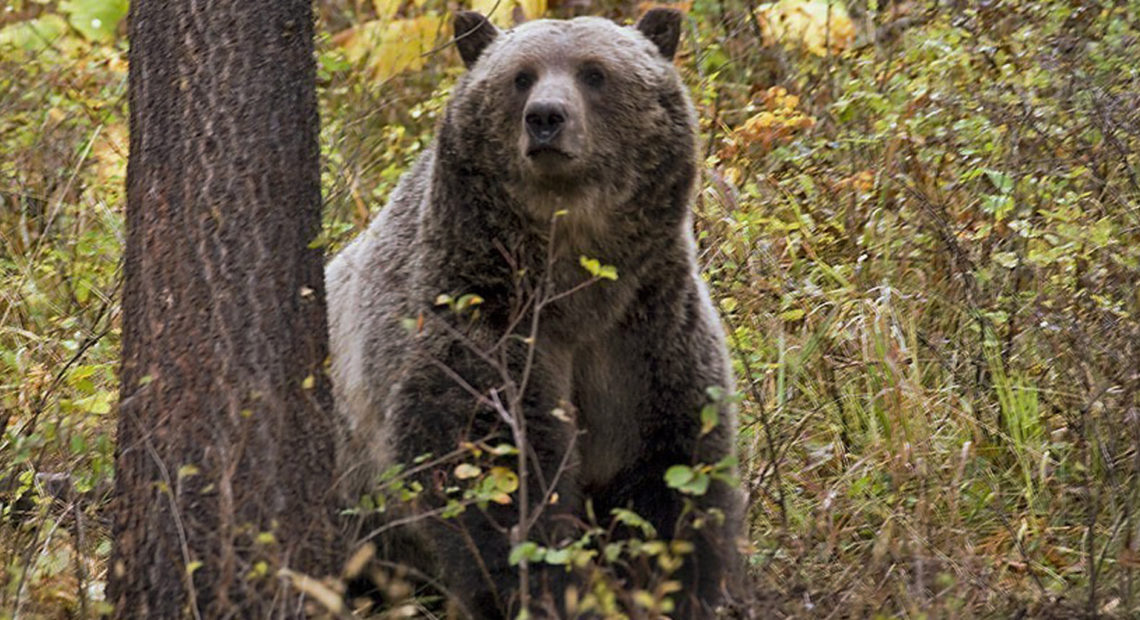
Timeline: A History Of Grizzly Bear Recovery In The Lower 48 States
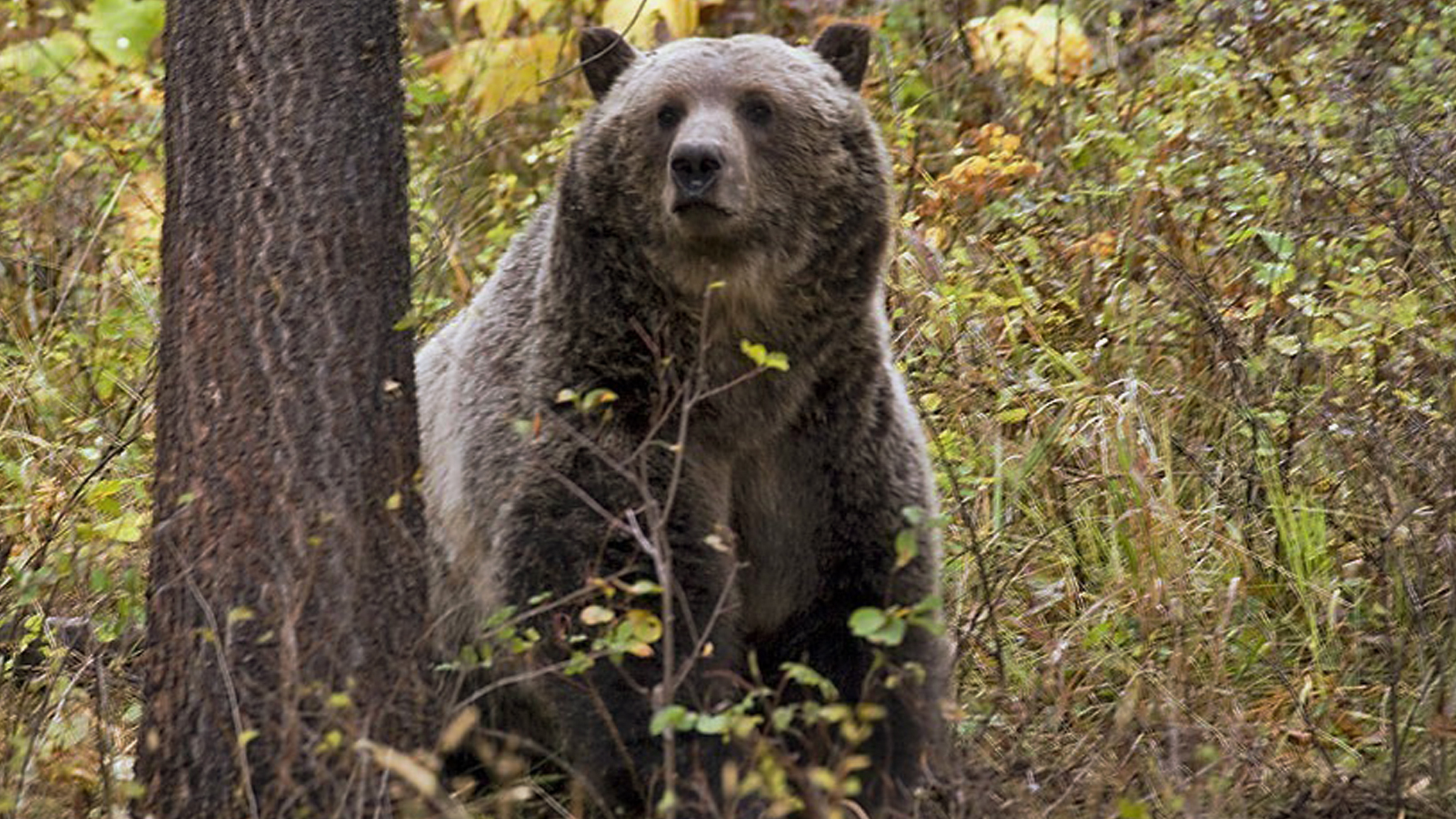
READ ON
BY NICK MOTT & JOSH BURNHAM / MTPR
At their peak, grizzly bears numbered more than 50,000 in the Lower 48. They roamed from the West Coast to the Great Plains, from northern Alaska to central Mexico. Facing threats from habitat loss, hunting and conflicts with people and livestock, their numbers dwindled to fewer than 1,000 in the lower 48 by the time the Endangered Species Act (ESA) was implemented in 1975. Today, managers say the Greater Yellowstone and Northern Continental Divide populations have recovered and are ready for delisting.
Here’s a timeline of the management actions, court cases and notable events that have shaped grizzly bear recovery since their ESA listing through today.
1975
Grizzlies In The Lower 48 Listed As Threatened Under ESA – July 28, 1975
The grizzly’s range has dwindled to about 2 percent of historic habitat in the Lower 48. In response, the U.S. Fish and Wildlife Service publishes a rule listing grizzlies in the Continental U.S. as “Threatened” under the Endangered Species Act. According to the rule, “it is now unlawful to kill, capture, harm, harass, import, or export a grizzly bear anywhere in the lower 48 states, or to sell any parts or products of grizzlies in interstate or foreign commerce.” But there’s one exception: the rule maintains sport hunting in Northwest Montana as long as no more than 25 bears are killed annually, through both management and hunting. The rule lists the most critical factor in the grizzly’s decline and recovery as conflicts with humans.
1983
Committee Formed To Oversee Grizzly Management – 1983
The Interagency Grizzly Bear Committee takes shape to coordinate federal, state and tribal stakeholders in managing, researching and monitoring grizzlies and implementing the grizzly bear recovery plan.
1990
“Augmentation Program” in the Cabinet/Yaak Begins – 1990
From 1990-1994, four female grizzlies with no history of negative run-ins with humans are captured in British Columbia and relocated to the Cabinet Mountains. It’s an experiment in increasing the dwindling grizzly population in the area. By the late 1970s, scientists estimated that fewer than a dozen bears remained in the Cabinets, and those bears weren’t reproducing, they were on the path to extinction.
1991
Grizzly Hunting Ends in Lower 48 – September 1991
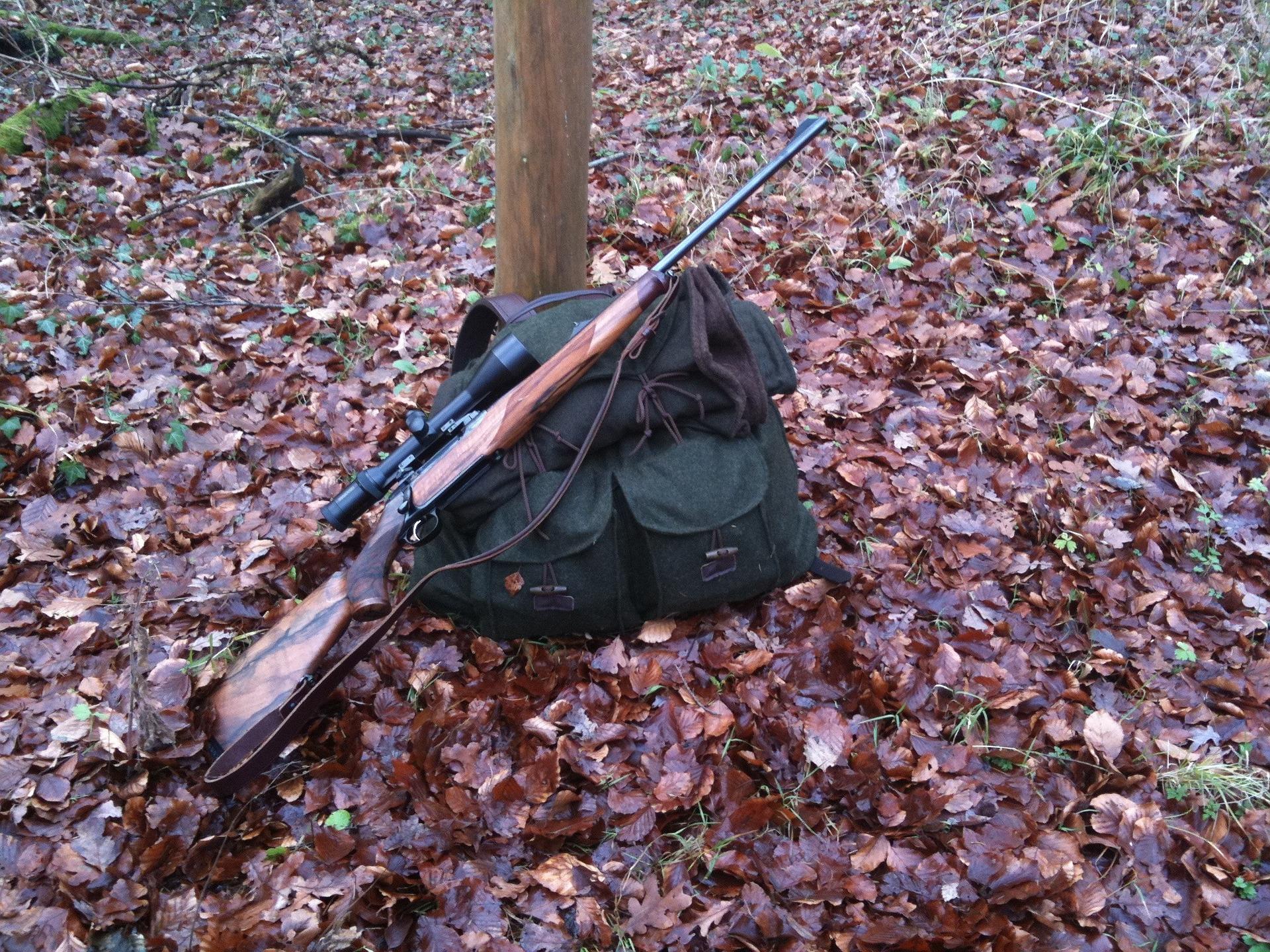
Hunting rifle.
CREDIT (PD)
While grizzly hunts in Wyoming and Idaho ceased when the bear was protected under the Endangered Species Act, small hunts persist in Montana. According to the New York Times, the state continues to allow grizzly hunts in an attempt to reduce conflict with humans. Up to 14 bears – including at most six females – could be killed. Montana officials argue that hunting instilled the animals with “a healthy fear of humans.” A federal judge stalls the hunts just days before they were set to begin, claiming the Endangered Species Act only permits hunting threatened animals under extraordinary population pressures.
1993
Recovery Plan Updated, New Era of Grizzly Management Begins – September 10, 1993
The U.S. Fish and Wildlife Service signs a landmark update to the 1982 Grizzly Bear Recovery Plan. The document begins poetically – with a passage from famed conservationist Aldo Leopold followed by a paragraph from ecologist Stephen Herrero:
“The grizzly bear is a symbolic and living embodiment of wild nature uncontrolled by man. Entering into grizzly country represents a unique opportunity – to be part of an ecosystem in which man is not necessarily the dominant species.”
The document, for the first time, formalizes six different ecosystems suitable for grizzlies, each of which will be managed separately: the Greater Yellowstone Ecosystem (GYE), the Northern Continental Divide Ecosystem (NCDE), the Bitterroot Ecosystem, the North Cascade Ecosystem, the Selkirk Ecosystem and the Cabinet-Yaak Ecosystem (CYE).
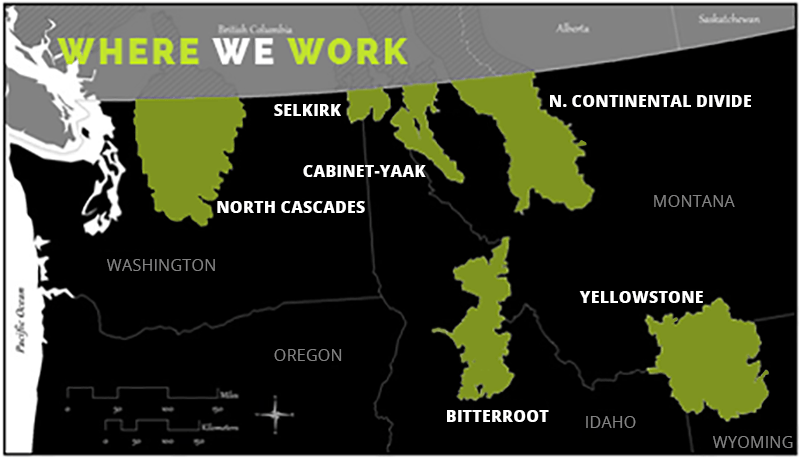
Grizzly bear recovery zones.
CREDIT: INTERAGENCY GRIZZLY BEAR COMMITTEE
2000
FWS Finalizes Plan to Reintroduce Grizzlies Into Bitterroot Ecosystem – November 16, 2000
The U.S. Fish and Wildlife Service announces a final plan to introduce at least 25 grizzlies into the Bitterroot Ecosystem of Montana and Idaho. The bears will be released into nearly 6,000 square miles of wilderness that’s surrounded by more than 15,000 square miles of additional public land.
2001
Bitterroot Reintroduction Plan Trashed – 2001
USFWS proposes scrapping its Bitterroot reintroduction plan under newly appointed Interior Secretary Gale Norton. The reintroduction plan had faced major opposition from the states, including a lawsuit from the Idaho governor. Norton’s proposal to scrap the reintroduction plan is never officially adopted, but Interior takes no further action to reintroduce bears to the Bitterroot.
2005
FWS Proposes Delisting Yellowstone-Area Bears – November 15, 2005
When listed, an estimated 220 to 320 bears lived in the GYE. By 2005, that number is higher than 600. The U.S. Fish and Wildlife Service says this means grizzlies in the Yellowstone area have recovered, and they propose removing endangered species protections for the GYE bears. “We are confident the future of the grizzly bear in Yellowstone is bright,” says Interior Secretary Gale Norton.
2007
Yellowstone Grizzlies Delisted – March 22, 2007
Following nearly 194,000 comments from the public, the U.S. Fish and Wildlife Service announces it will delist GYE bears. Conservation and tribal groups quickly file suit.
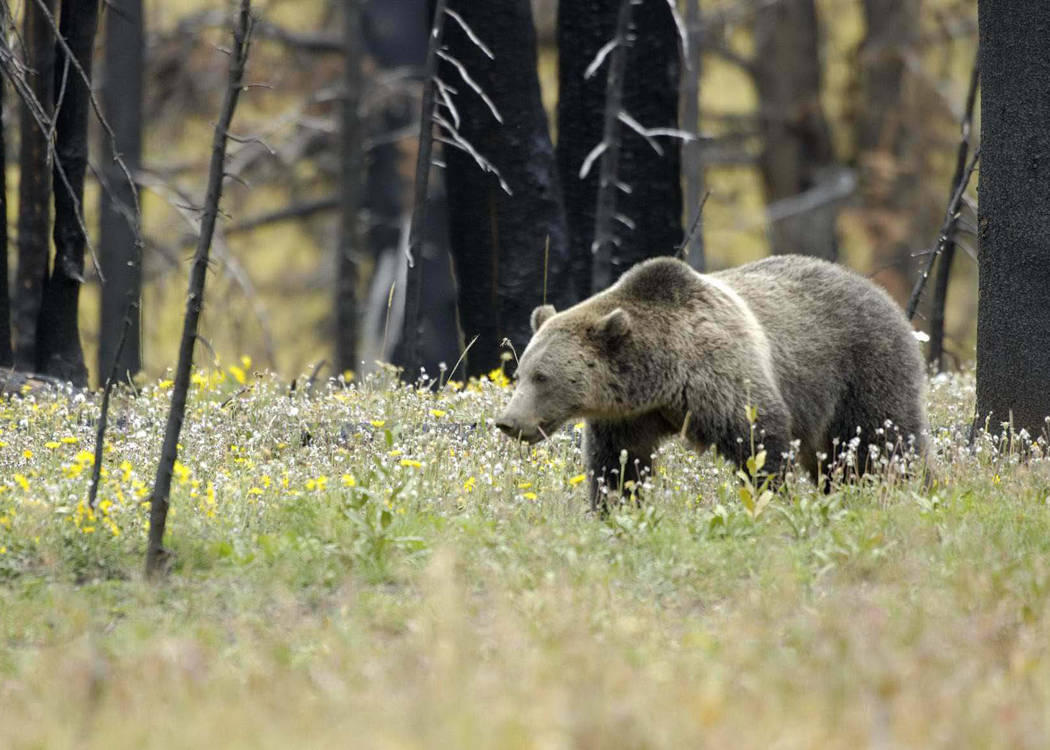
Grizzly bear in Yellowstone National Park. . CREDIT: U.S. FISH AND WILDLIFE SERVICE
2009
Federal Protections Restored – September 2009
In a 46-page decision, a federal judge in Missoula puts Yellowstone-area grizzlies back on the endangered species list. The judge says the government didn’t follow its own science in delisting the bears. In particular, the climate-change driven decline of whitebark pine – a key part of the grizzlies’ diet – poses an existential threat to the bears. The judge also says the conservation strategy in place to maintain protection of bears is largely unenforceable and inadequate.
2010
The Feds Appeal – August 2010
The U.S. Fish and Wildlife Service joins the state of Wyoming, the Safari Club International, and others in appealing the decision to the U.S. 9th Circuit Court of Appeals. They maintain the Greater Yellowstone bears are recovered, face no threats to a healthy and growing population, and say the District Court’s ruling erodes public faith in the Endangered Species Act.
2011
Grizzly bear population in the NCDE Expanding – 2011
More than 800 bears are estimated to live in the NCDE, and the grizzly population has been growing consistently for years. Data on recreation, industry, road use, and other factors in this year will prove crucial later, as environmental advocates and wildlife managers spar over what sort of habitat is necessary for a growing grizzly population. It serves as a baseline of habitat data for a time in which bears thrived.
Grizzly Bear Photographed in the North Cascades – July 2011
On a hike in the high mountains, 26-year-old Joe Sebille snaps a picture of a grizzly on a hillside. Scientists verify the photo is of a living grizzly bear, likely foraging for food to help it through the winter. The last verified sighting of a grizzly was in 1996. This is the first photograph in the more than 50 years of a living member of the species in the North Cascades.
Appeal Overruled, Federal Protections Will Remain – November 2011
A three-judge panel for the U.S. 9th Circuit Court of Appeals sides with the District Court’s decision – they say the U.S. Fish and Wildlife Service erroneously removed federal protections for Greater Yellowstone bears. “The Service’s delisting decision, the subject of this appeal, raises a host of scientific, political, and philosophical questions regarding the complex relationship between grizzlies and people in the Yellowstone region,” writes Judge Richard C. Tallman in his decision. The court says the whitebark pine decline does pose a threat to grizzlies. However, they reverse the District Court’s decision as relates to the management plan – the 9th Circuit says the recovery strategy is adequate. Grizzlies remain “Threatened” under the Endangered Species Act.
2013
Grizzly Conflicts With Montana Ranching Communities Intensify – June 2013
Grizzly bears continue expansion from core habitat in the Northern Continental Divide Ecosystem, venturing east of the Rocky Mountain Front. In a Hutterite colony near Valier, Montana, two collared grizzlies are found dead. Members of the colony claim the bears died of exhaustion as they were chased away. Community members say they didn’t report the deaths because they were terrified. The grizzlies’ collars are smashed and burned, while the grizzlies themselves are buried after a botched cremation attempt. The penalty for each of the two deaths could reach six months in prison and a $25,000 fine, but the involved parties reach a plea agreement.
2014
Grizzly Bear Treks Nearly 3,000 Miles – December 2014
A female grizzly, nicknamed Ethyl, makes a long journey that takes her from close to Canada, near Missoula, through the Bitterroots, and deep into Idaho. In her travels, she’s rarely seen by humans and doesn’t get into trouble when she’s around livestock or property. State officials are optimistic that the bear shows evidence that grizzlies and humans can coexist without conflict.
Federal Effort Begins to Reintroduce Grizzlies in the North Cascades – 2014
The National Park Service announces it will start an environmental analysis that will serve as a first step in reintroducing grizzlies to the North Cascades Ecosystem. This step will take at least three years, and will involve extensive public input.
2015
Emotions High Over Grizzly Reintroduction in Washington – June 2015
More than 3,000 people comment on federal plans to reintroduce grizzlies into the North Cascades. The document comes in at over 1,000 pages long, and includes passionate thoughts from grizzly advocates, people fearful of living with grizzlies, and just about every perspective in between. Officials expect to finalize plans by the end of 2017.
2016
Tribal Groups Sign Treaty – October 2, 2016
U.S. and Canadian tribal groups sign a treaty advocating continued protection of grizzly bears and denouncing trophy hunting of the animal. Signatories cite a rich history of cultural and spiritual significance. Over the next two years, more than 200 tribes will sign the treaty. Chief Stan Grier of the Piikani tribe in Canada says it’s the first Native American treaty in a century and a half that extends across the country’s northern border.
Death Raises Questions About Recreating In Grizzly Country – June 29, 2016
While mountain biking outside Glacier National Park, Forest Service law enforcement officer Brad Treat collided with a grizzly bear as he turned a blind corner. Surprised, the bear mauled and killed Treat. The tragedy brings attention to the need for proper precautions for all forms of recreation – not just hiking – in bear country. These precautions include carrying bear spray, making noise and reducing speed in low-visibility areas. It came at the same time as state and federal measures that could expand mountain bike access in bear country.
2017
Another Species, Another Court Case – August 1, 2017
The U.S. Court of Appeals for the District of Columbia rules that Great Lakes gray wolves should remain under federal protection. The lengthy legal battle centers around, among other factors, whether the FWS can carve out a “discrete population segment” for the purposes of delisting it. The court says segmenting populations in this way is legally possible, but was improperly done in this case. “The Service cannot review a single segment with blinders on, ignoring the continuing status of the species’ remnant,” writes Judge Patricia Millett. It’s a decision that will prove important to the outcome of later grizzly delisting decisions.
Yellowstone Delisting, Take Two – June 22, 2017
Interior Secretary Ryan Zinke announces delisting of Yellowstone-area grizzlies. An estimated 700 bears exist in the ecosystem, and their range has more than doubled since the 1970s. “This achievement stands as one of America’s great conservation successes; the culmination of decades of hard work and dedication on the part of the state, tribal, federal and private partners,” Zinke says. Conservation groups and tribes file suit, citing a plethora of concerns.
NCDE Bears Expanding – 2017
Montana Fish, Wildlife and Parks hires a bear manager based in Conrad – about an hour’s drive east from the Rocky Mountain Front. It’s a testament to the grizzlies’ expansion well into the plains. Grizzly bear presence in the area has been documented for about a decade – and it’s part of their historical range. But more bears are finding their way near homes and into fields and stockyards. It’s the breadbasket of Montana, dominated by relatively flat, private agricultural land. Locals worry about grizzly impacts on livestock, grain, and the safety of their families.
2018
Grizzly Hunts Set In Wyoming and Idaho – May 2018
Wyoming finalizes a hunt for up to 10 bears in grizzlies’ core habitat in the state, and another 12 in other areas. If one female is killed in the core habitat, no other grizzlies in the area can be hunted. Idaho proposes a hunt for one bear. Montana refrains from a grizzly hunt this year. The hunts in Idaho and Wyoming will begin on September 1. In total, up to 23 bears could be taken. State wildlife managers say this number poses no threat to the grizzly population, but local activists and photographers opposed to the hunt enter the lottery in an initiative dubbed “Shoot’em With a Camera.”
Habitat-Based Recovery For The NCDE – May 16, 2018
After legal challenges to its 1993 document, the USFWS releases a supplement to the 1993 Recovery Strategy that identifies criteria in habitat necessary for bears to flourish. It sets 2011 as a baseline year for data regarding future development of roads and infrastructure.
Grizzly Advocates Fret Over Hiker Threats To Cab/Yaak Grizzlies – July 2018
Land designated for the Pacific Northwest National Scenic Trail – starting on the coast of Washington and extending all the way to Glacier National park – slices through grizzly bear habitat in the Yaak Valley. Locals worry the human presence could threaten the area’s small number of bears. They cite overuse issues on other popular trails, like the Pacific Crest Trail and the Appalachian Trail.
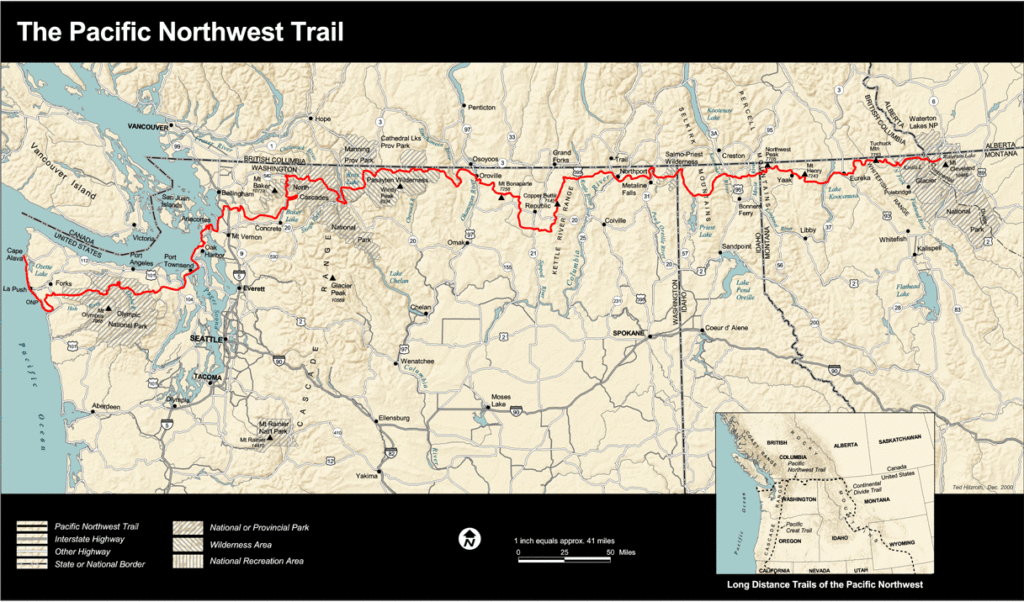
Map of the Pacific Northwest National Scenic trail. CREDIT: NATIONAL PARK SERVICE
Augmentation Program In The Cabinet Yaak Continues – July 2018
The 20th grizzly is released in the Cabinet-Yaak Ecosystem in a continuation of the population augmentation program that began in the early 1990s. The program is designed both to boost the population and to increase genetic diversity of grizzlies in the area. An estimated 55-60 grizzlies roam the Cabinet-Yaak area, a population growing a little more than 2 percent a year.
A Court Case and a Temporary Halt to the Hunt – August 30, 2018
With grizzly hunts scheduled to start in sections of the Greater Yellowstone Ecosystem in Wyoming and Idaho on September 1, District Judge Dana Christensen issues a restraining order on the hunts. He hears arguments from environmental and tribal groups opposed to delisting, and from the federal government. Many expect the judge to “rule from the bench,” meaning make an immediate decision regarding the delisting of GYE grizzly bears. But he opts to take his time, and carefully consider all arguments he heard.
Yellowstone Grizzlies Returned to the Endangered Species List. Again. – September 24, 2018
Judge Christensen issues a decision returning GYE grizzlies to the endangered species list and putting a stop to the postponed hunts in Wyoming and Idaho. The decision rests on three issues: the effect delisting could have on other ecosystems of grizzlies, how grizzlies could connect between ecosystems and how to compare different methods of counting bears.Christensen also specifically mentions Glacier-area bears, saying, “The Service’s approach – evidenced first by this delisting and by its proposal to delist the other significant population, the Northern Continental Divide population – does not square with the ESA as a matter of statutory interpretation or policy.” The Fish and Wildlife Service has not formally proposed delisting in the NCDE, but officials have long said grizzlies have met recovery criteria, and had announced plans to decide whether or not to remove federal protections by the end of the year.
An Unexpected Discovery – October 27, 2018
A grizzly bear is captured on a golf course near Stevensville – outside the Bitterroot Mountains, about a half hour south of Missoula. Bear managers consider the Bitterroot Ecosystem a key point of possible connection between Yellowstone and Glacier-area bears. But this grizzly is relocated north to the NCDE. The event draws attention to an often-overlooked ecosystem, and to the lack of clear plans for managing grizzlies when they set paw in the Bitterroot Ecosystem.
Montana Limits Grizzly Bear Deaths – November 2018
A state rule passes that dictates mortality limits after NCDE bears are delisted. The rule says Montana Fish, Wildlife and Parks will manage for about 1,000 grizzlies in and around Glacier National Park. In order to delist grizzlies, the Fish and Wildlife Service must show adequate protections are in place to ensure the bear population never again faces threats that could return it to the endangered species list.
Record Mortalities in The Northern Continental Divide Ecosytem – November 2018
More than 50 grizzlies die or are relocated from the Northern Continental Divide Ecosystem – the highest number on record. Officials cite a spike in vehicle-related deaths as a primary cause. State bear biologists say the numbers are high, but not high enough to be of concern. Wildlife advocates say the numbers are worrisome, and indicate an upward trend in mortality as population and recreation pressures rise in the NCDE.
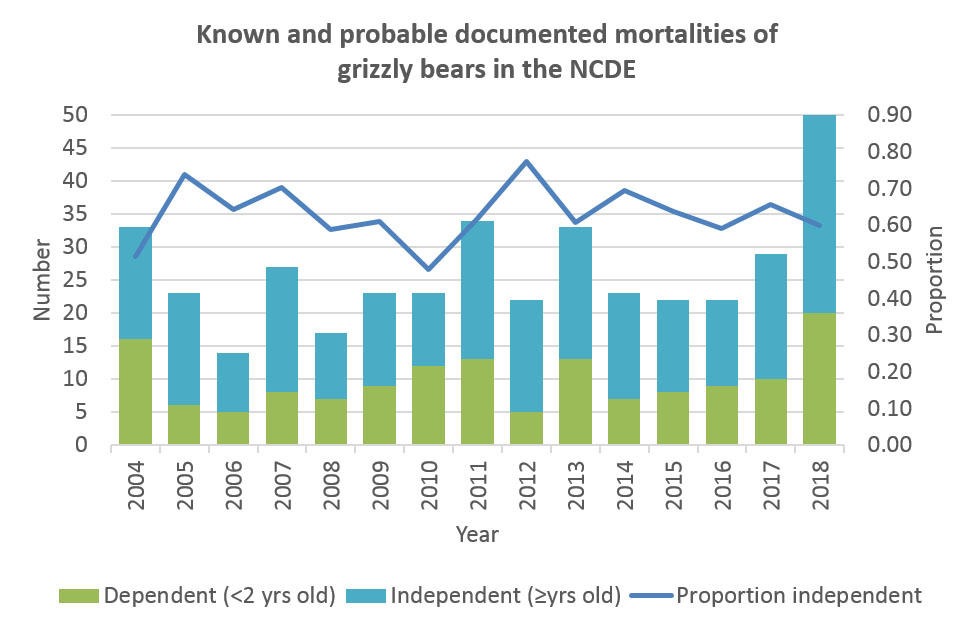
Known and probable documented mortalities of grizzly bears in the NCDE from 2004 to 2018. CREDIT: MONTANA FISH, WILDLIFE AND PARKS
NCDE Delisting Plans Stalled – December 2018
FWS Grizzly Bear Recovery Coordinator Hilary Cooley says the agency won’t propose delisting NCDE grizzlies in 2018, as had long been speculated. Judge Christensen’s decision throws a wrench in the federal government’s earlier plan to decide whether or not to delist by the end of the year.
Greater Yellowstone Delisting Appeals – December 2018
According to the Powell Tribune, Grizzly Bear Recovery Coordinator for the U.S. Fish and Wildlife Service Hilary Cooley tells Wyoming legislators, “My personal feeling is we would not be successful on appeal.” However, the FWS files notice to appeal the court decision blocking delisting in the GYE anyway. Montana, Wyoming, Idaho, and intervenors including hunting advocacy groups and the NRA also file notices. This does not mean the government will formally appeal, but does serve as a placeholder that grants the FWS more time to decide whether or not to do so.
Cascades Reintroduction Stalled – December 2018
After numerous roadblocks including the resignation of Secretary of the Interior Ryan Zinke, federal officials say the North Cascades Reintroduction plan will not be finished by the end of the year. The government held six scoping meetings in 2015, eight public hearings and two webinars in 2017, and provided evidence at about 70 other meetings in the region. They’ve received more than 125,000 public comments on the draft plan.
National Forests Coordinate Bear Management Strategies -December 28, 2018
In the midst of the government shutdown, Flathead National Forest puts its first new forest plan in more than 30 years in the federal register, along with amendments that will coordinate grizzly recovery strategies across all National Forests with land in the NCDE. Those lands compose about 60 percent of land within the ecosystem, and Flathead National Forest alone accounts for nearly 40 percent. In order to delist bears, the government must show that adequate plans are in place for the continued health of the population without ESA protection. Critics worry the plans abandon efforts to decommission old, unused roads. They cite scientific studies that say even unused roads pose barriers to grizzly expansion.
2019
Feds File Appeal To Delist Yellowstone-Area Grizzlies – May 24, 2019
The Trump Administration asks a federal appeals court to remove Endangered Species Act protections for Yellowstone-area grizzly bears. Former Interior Secretary Ryan Zinke stripped federal protections for those bears in 2017, but a federal judge in Missoula returned the grizzlies to the endangered species list last fall. That move cancelled what would been the first grizzly hunts in the lower 48 in decades, scheduled in Wyoming and Idaho.
Grizzly Bear Population Estimates By Ecosystem – June 2019
- Northern Continental Divide Ecosystem: > 1,000
- Greater Yellowstone Ecosystem: > 700
- Selkirk Ecosystem (including British Columbia): 80
- Cabinet/Yaak Ecosystem: 50
- North Cascades Ecosystem: < 20
- Bitterroot Ecosystem: 0?
*Data from fws.gov/mountain-prairie/es/grizzlybear.php
Copyright 2019 Montana Public Radio. To see more, visit mtpr.org
Related Stories:
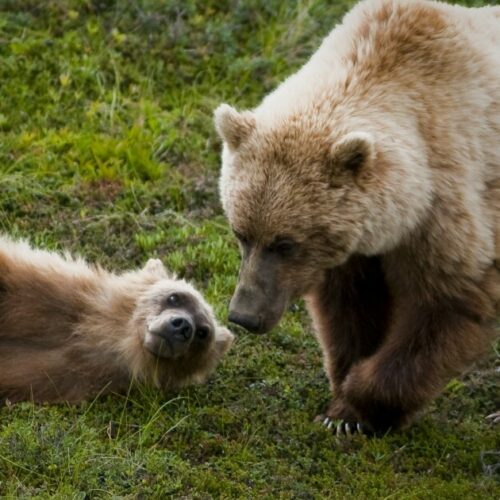
Could the status of grizzly bears change in the lower 48 states?
Listen The U.S. Fish and Wildlife Service has proposed an update to how grizzly bears are managed throughout the country (Credit: National Park Service) (Runtime 0:55) Read There could be

Decision upheld to remove a portion of Electron Dam on the Puyallup River
A portion of the Electron Dam on the Puyallup River has to be removed, according to a decision from the 9th U.S. Circuit Court of Appeals.
The federal appeals court upheld the decision by the U.S. District Court for the Western District of Washington that a vertical metal wall portion of the dam, a temporary spillway, makes the dam a complete barrier to fish passage and must be removed.
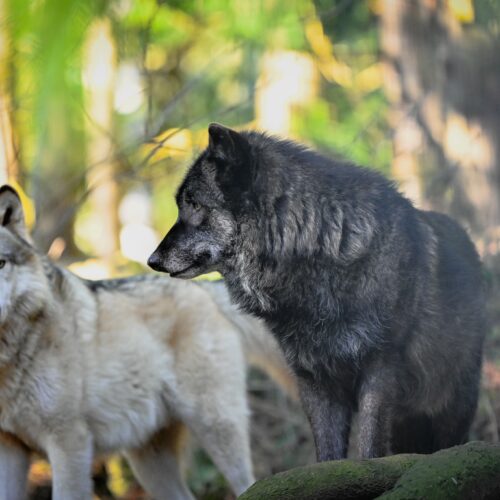
Complaint to federal agency over Washington animal organization
In Skagit County, a nonprofit that houses a number of animals, including exotic ones, is in continued legal battles. A law firm that advocates for animal rights is claiming the organization may have violated the Endangered Species Act, by, as the law firm claims in its complaint, the illegal euthanization of wolves.















